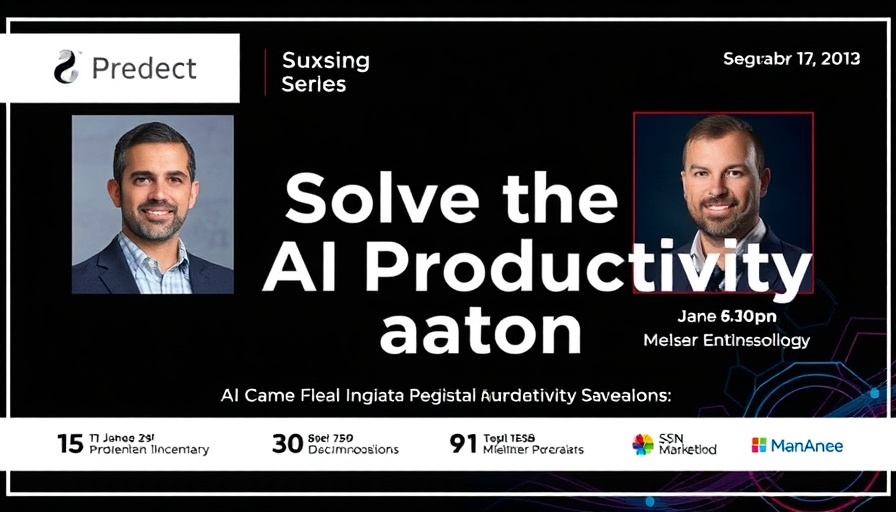
The AI Productivity Paradox: A Growing Dilemma
Artificial intelligence (AI) has emerged as a transformative tool for enhancing productivity across various sectors. Yet, despite the increasing integration of generative AI into workplaces, many organizations find themselves grappling with a perplexing issue: the AI productivity paradox. Simply put, while AI is designed to streamline tasks and increase efficiency, the anticipated uptick in productivity and revenue isn't always realized. Why is this the case?
In 'Solving the AI Productivity Paradox -- An Everyday AI Chat,' the discussion dives into the complexities of AI implementation in the workplace, exploring key insights that sparked deeper analysis on our end.
A Shifting Work Landscape
The concept of a traditional workplace has undergone substantial changes, especially since the COVID-19 pandemic. In the past, employees were accustomed to a 9-to-5 structure in an office setting. The shift to hybrid and remote work has introduced a new dynamic where employers focus more on the location of their employees than on their productivity. This shift raises critical questions: Are employees truly working more effectively with AI, or are they merely managing their time differently?
The Role of AI in Enhancing Employee Experiences
Companies like HP, as mentioned in the insightful video with Fossil Massude, have ventured into blending hardware and software offerings to improve employee experiences. The Workforce Experience platform is one example, collecting data on employee sentiment and device performance, ensuring that technology removes obstacles rather than introducing new ones. This innovation is intended to foster a more positive and productive workspace, challenging the notion that AI alone is the solution to increasing productivity.
Employee Autonomy vs. Productivity
One of the remarkable benefits AI can offer is the ability to automate mundane tasks, allowing employees to focus on higher-value work. However, a different trend has emerged, where some employees report being significantly less engaged, utilizing AI tools to reduce their workload to mere hours a week. This could imply that, while AI tools enhance efficiency, they also lead to an unintended outcome where employee output decreases due to comfortability with automation.
Finding the Sweet Spot: Managing Employee Expectations
To effectively harness the benefits of AI, managers must understand the new expectations that come with technological advancements. As Fossil emphasized, raising the bar for what productivity looks like in the age of AI is crucial. Clear communication of expectations ensures that employees do not rest on their laurels while utilizing AI to their advantage. Furthermore, creating an environment that encourages the appropriate use of AI tools without micromanagement fosters a culture of trust and innovation.
Looking Forward: The Future of Work
As companies navigate this AI landscape, it’s paramount they rethink traditional hiring concepts. The notion of hiring for 'human roles' should evolve into procuring team members that are adaptable to augmented roles, equipped with the capability to integrate AI into their workflows. By doing so, organizations can remain agile and prepared for the ever-evolving nature of work driven by AI advancements.
In summary, solving the AI productivity paradox requires a multifaceted approach that blends raising expectations, enhancing employee experience, and fostering trust. Businesses should strive to equip their teams with the appropriate tools and clarity, ensuring that AI serves to elevate—not replace—the human element in the workplace.
If you want to delve deeper into how AI is reshaping workplaces and how to leverage these tools for growth, make sure to join our free daily newsletter, packed with insights and actionable strategies!
 Add Row
Add Row  Add
Add 




 Add Row
Add Row  Add
Add 

Write A Comment